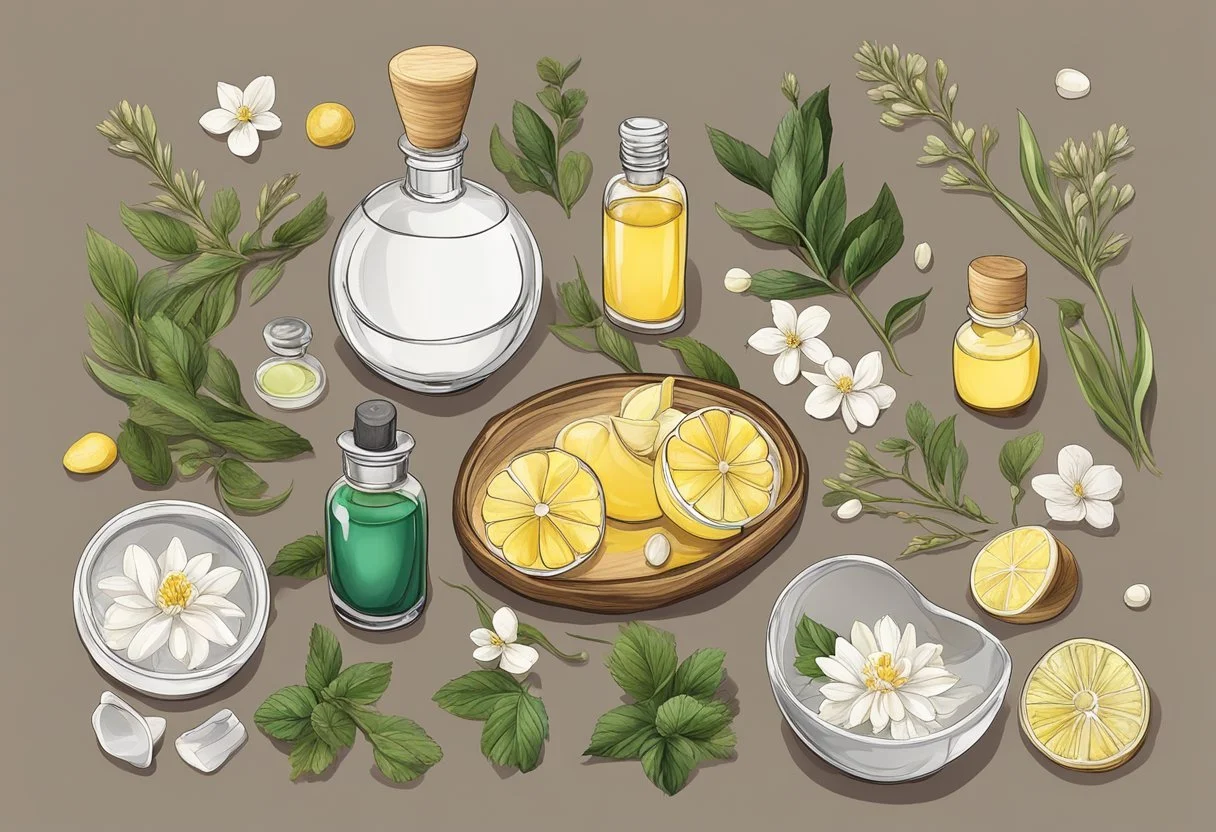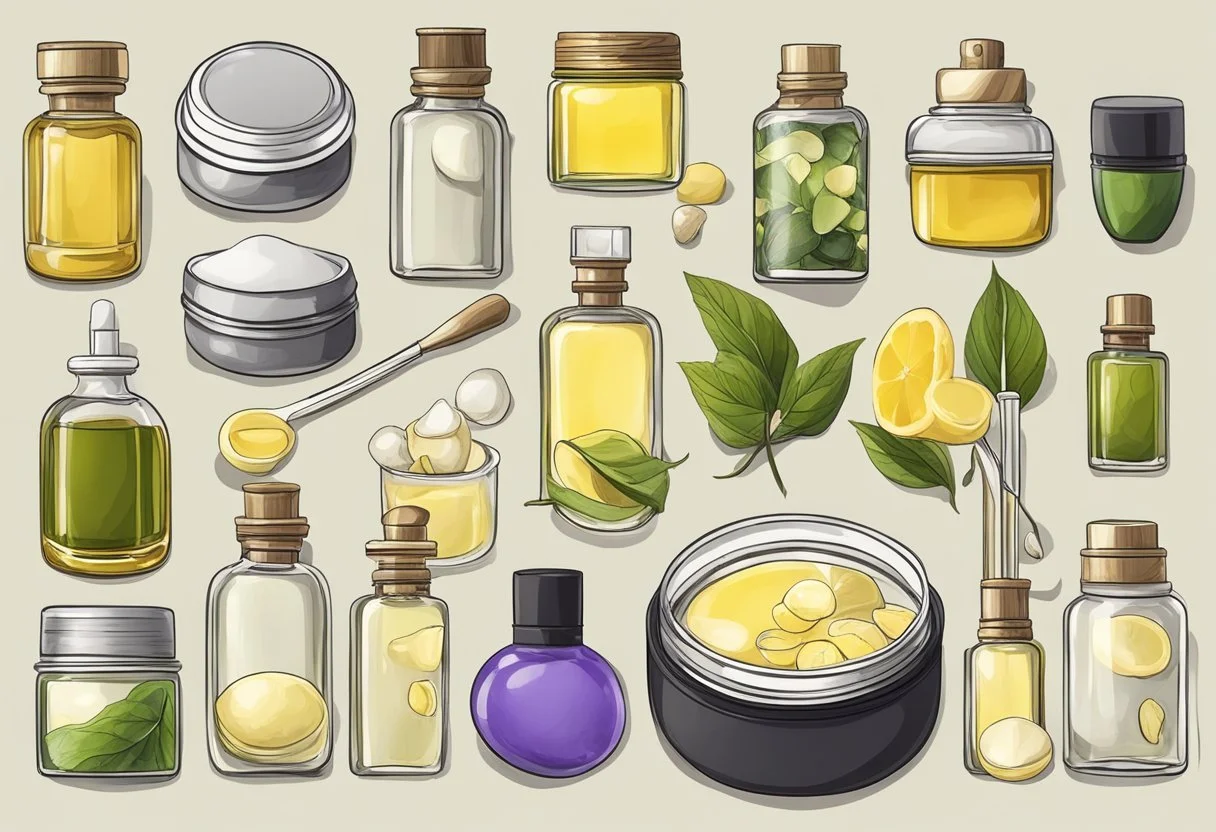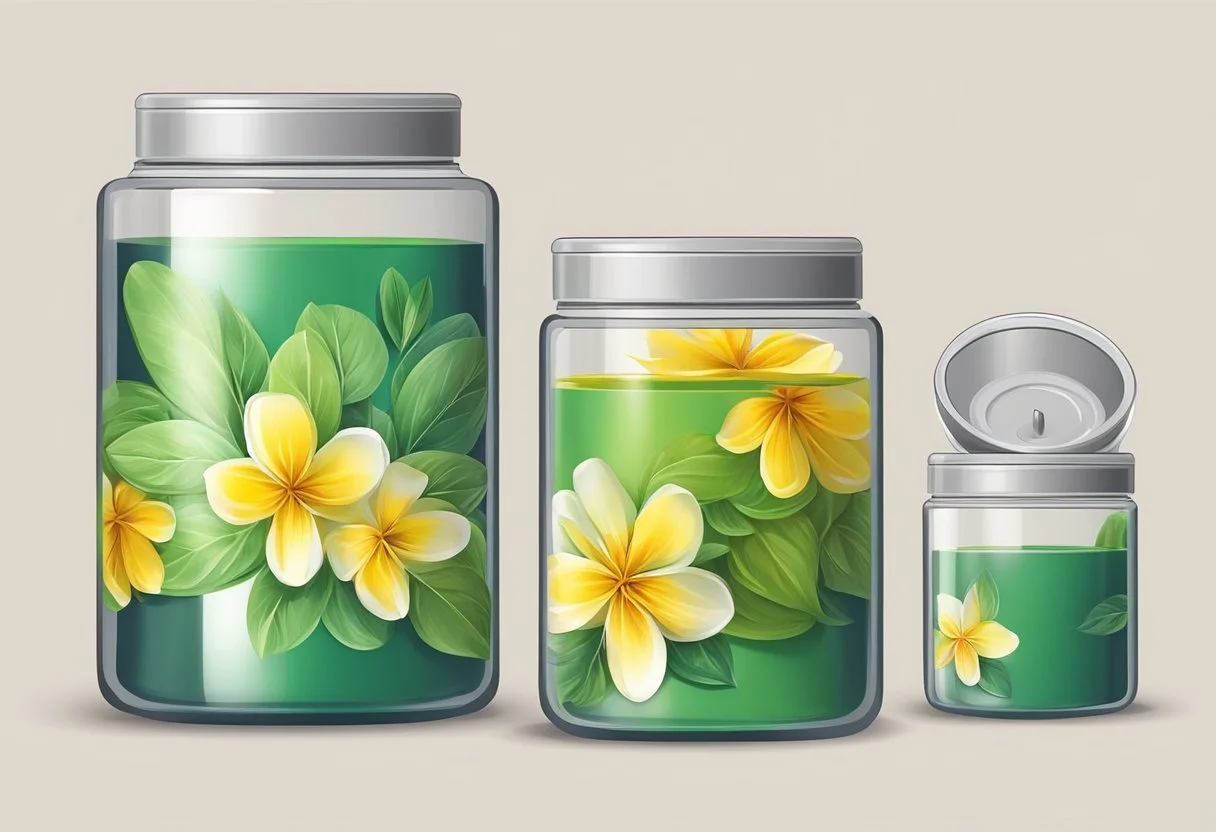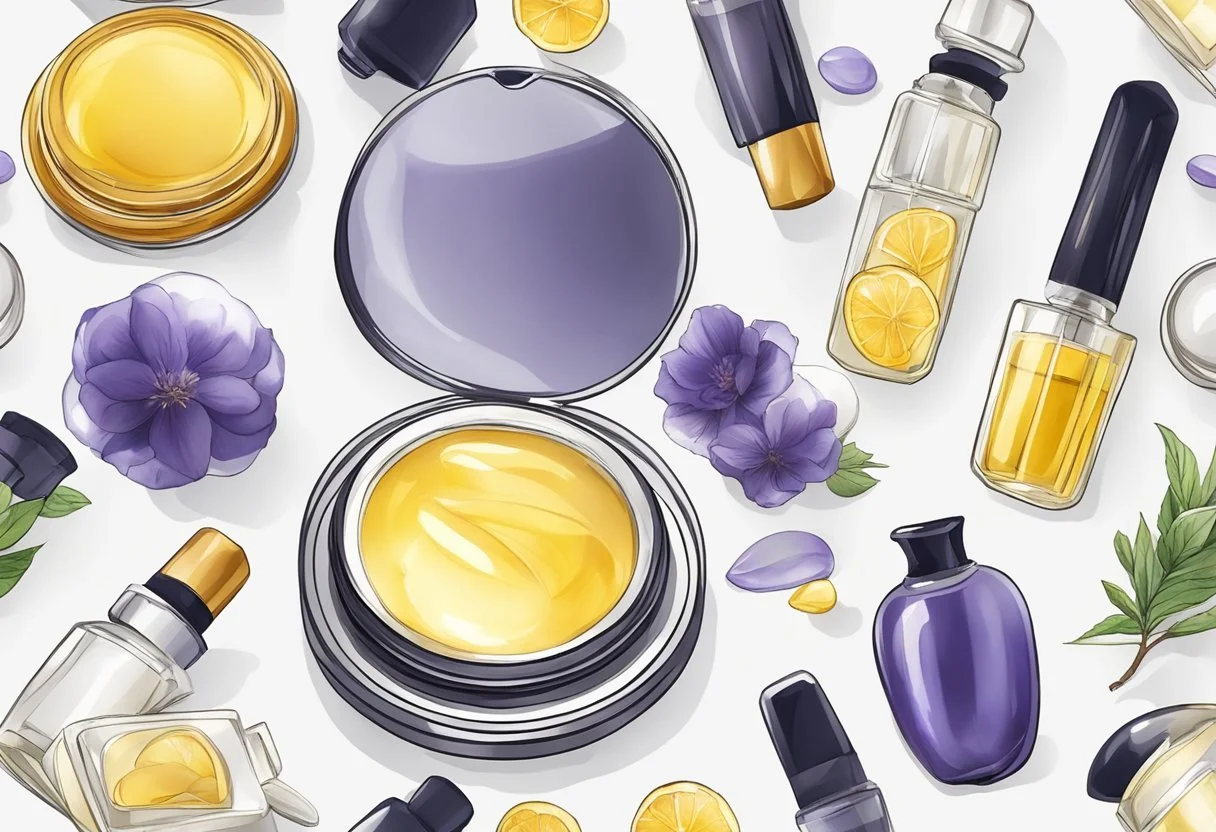How to Make Solid Perfume?
A Quick and Easy Guide
This article is part of our series on Natural Health
Discover > Natural Health > How to Make Solid Perfume?
Solid perfumes have been gaining popularity among fragrance lovers, offering a unique way to wear your favorite scents without the hassle of carrying liquid bottles. These compact and portable alternatives to traditional liquid perfumes are convenient for travel, reapplying on the go, and are more environmentally friendly due to their packaging. Making solid perfume at home is a simple and enjoyable process, allowing you to customize your very own signature scent.
The process of making solid perfume involves blending various essential oils and fragrances to achieve a desired aroma, then combining it with a base – usually made of beeswax or a plant-based alternative – to create a solid balm-like texture. This method allows for creativity and personalization in selecting the preferred combination of scents, as well as controlling the intensity of the fragrance. Whether you're a seasoned DIY enthusiast or a beginner looking to explore the world of perfumery, creating a solid perfume at home is a fun and rewarding endeavor.
In this article, we will guide you through the steps to make your very own solid perfume from scratch, discuss the benefits of using solid perfumes, and share tips on choosing the right ingredients and ratios to create a truly personalized and delightful fragrance experience. With a bit of time and patience, you'll be well on your way to crafting a unique scent that represents you perfectly.
Understanding Solid Perfumes
Solid perfumes are a convenient alternative to traditional alcohol-based liquid perfumes and body sprays. They come in various forms, such as balms, creams, and even wax-based bars, making them travel-friendly and less likely to spill or leak.
One notable advantage of solid perfumes is that they are alcohol-free, which can be beneficial for individuals with sensitive skin or allergies. Alcohol, commonly found in spray perfumes, can sometimes cause irritation or dryness on the skin. In contrast, solid perfumes often use a blend of skin-nourishing oils, waxes, and butters as their base. This not only helps the fragrance adhere to your skin but also provides additional moisturization and a unique texture.
Another distinction between solid perfumes and their liquid counterparts is the intensity and longevity of the fragrance. While spray perfumes typically offer a more potent and far-reaching scent, solid perfumes are generally more subtle and personal. This is because they are applied directly to the skin, usually on pulse points, allowing the fragrance to release slowly as your body heat warms the product.
In terms of application, solid perfumes are incredibly easy to use. Simply rub your finger or a small applicator on the surface of the solid perfume, and then gently apply to your desired area, such as the wrists, neck, or behind the ears. This targeted application allows for better control of the scent's intensity, as well as the opportunity to layer fragrances or reapply throughout the day.
While solid perfumes might not replace the traditional body spray or liquid perfume entirely, they offer a unique and versatile option for those seeking an alternative fragrance experience. With a wide array of scent options available and the added benefits of portability, skin nourishment, and subtlety, solid perfumes are a worthy addition to any fragrance collection.
Ingredients for Solid Perfume
Importance of Essential Oils in Solid Perfume
Essential oils are the heart of solid perfumes. These volatile, aromatic compounds extracted from plants provide the unique and natural fragrance that makes solid perfumes so appealing. Essential oils are categorized into three types: base notes, middle notes, and top notes. This classification reflects their evaporation rates, which affect the longevity and depth of the aroma they produce.
Base notes, such as sandalwood and patchouli, have a slower evaporation rate and support the overall fragrance structure. Middle notes, like lavender and rosemary, help balance out the scent, while top notes, such as citrus or mint, provide a refreshing and vibrant touch. Combining a variety of essential oils creates a balanced, multi-dimensional fragrance that can be customized to personal preferences.
Choosing the Carrier Oil
Carrier oils play a vital role in solid perfume making. They act as a foundation that disperses and enhances the essential oils' fragrance. Moreover, carrier oils have their own beneficial properties that can nourish the skin. Common carrier oil choices include almond oil, jojoba oil, and grapeseed oil (how long does grapeseed oil last?). Each oil has a unique consistency, absorption rate, and aroma that can influence the final product. Here are some considerations for choosing a carrier oil:
Almond Oil: Lightweight, mildly scented, and easily absorbed by the skin. It serves as a moisturizing and nourishing base due to its high vitamin E content.
Jojoba Oil: Light in texture, virtually odorless, and absorbs quickly into the skin. It resembles the skin's natural sebum, making it a great option for those with sensitive skin.
Grapeseed Oil: Thin and light, with a mild, nutty aroma. Rich in antioxidants and easily absorbed, making it suitable for various skin types.
Necessity of Beeswax
Beeswax acts as the primary thickening agent in solid perfume, turning the liquid oil mixture into a solid, easily applicable balm form. Beeswax should be used in combination with the chosen carrier oil in a double boiler to prevent it from burning. Beeswax pellets or pastilles are preferred over solid beeswax blocks, as they melt evenly and quickly.
The amount of beeswax needed depends on the desired consistency of the final product. More beeswax will create a firmer solid perfume, while less will result in a softer texture.
Alternatively, for those seeking a vegan option, candelilla wax can be used in place of beeswax, though its melting point is slightly higher, and the wax-to-oil ratio may differ. Experimenting with the proportions of natural ingredients will allow for a customized, personal solid perfume that suits individual preferences.
Fragrance Notes and Combinations
When creating solid perfumes, it's crucial to understand the balance of fragrance notes and combinations. This section will guide you through popular essential oil combinations and ways to create unique scents.
Popular Essential Oil Combinations
Essential oils can be blended together to produce a captivating and long-lasting fragrance. Here are some popular essential oil combinations:
Floral and Citrus: Jasmine and bergamot or lavender and tangerine create a fresh, uplifting scent.
Woody and Earthy: Cedarwood and vetiver or sandalwood and patchouli offer a warm, grounding aroma.
Herbal and Minty: Rosemary and lemongrass or clary sage and geranium promote clarity and invigoration.
Spicy and Sweet: Ginger and vanilla or frankincense and ylang ylang deliver an exotic, alluring blend.
Creating Unique Scents
To create unique scents, experiment with various essential oil blends while keeping these principles in mind:
Fragrance notes: Scents consist of top, middle, and base notes. Top notes (e.g., lemon, lime, grapefruit) are the first to be detected but evaporate quickly. Middle notes (e.g., lavender essential oil, geranium, juniper) last longer and give the perfume body. Base notes (e.g., cedarwood essential oil, pine, ylang ylang) provide depth and linger the longest.
Ratios: A balanced ratio of top, middle, and base notes creates a harmonious scent. Aim for a ratio of 30% top notes, 50% middle notes, and 20% base notes.
Carrier oils: To ensure the scent lingers, dilute essential oils with a carrier oil (e.g., jojoba oil or fractionated coconut oil) before mixing them into the solid perfume base.
Fragrance oils: If desired, you can incorporate fragrance oils (i.e., synthetic scents) to enhance your perfume. However, some fragrance oils may not be suitable for aromatherapeutic purposes.
Testing: Mix small batches and let your blends sit for 24-48 hours to allow the scents to meld and develop before evaluating.
Remember, practice and experimentation are essential for mastering the art of blending scents. As you gain experience, your confidence and knowledge will grow, allowing you to create bespoke solid perfumes that are both captivating and personal.
Steps to Make Solid Perfume
Mixing Ingredients
First, gather the necessary ingredients for your recipe. A simple solid perfume can be made from a mix of carrier oil, such as jojoba or almond oil, beeswax, and essential oils for fragrance. The customizable nature of DIY recipes allows you to create unique scents by combining different essential oils.
Begin by measuring the carrier oil and beeswax using a scale. For a standard lip balm tube size, a ratio of 1:4 (beeswax to carrier oil) is recommended. Then, choose your preferred essential oils and set aside.
Melting and Combining
To create the solid perfume base, use a double boiler or create one by placing a heat-resistant bowl over a saucepan filled with water. Heat the water on the stove until it begins to simmer. The double boiler method ensures even heating and prevents the ingredients from burning.
Using the double boiler, melt the beeswax and carrier oil together. Stir the mixture occasionally to ensure the beeswax and oil blend seamlessly. Once they are fully melted, carefully remove the bowl from heat.
Quickly add your chosen essential oils to the melted mixture. It is important to do this step right away, as the mixture will begin to solidify once it starts to cool down. Stir the mixture gently to ensure the essential oils disperse evenly.
While the mixture is still in liquid form, carefully pour it into your chosen containers, such as small metal tins or lip balm tubes. Wipe away any excess wax that may have dripped onto the container's edges.
Allow the solid perfume to cool and set completely before use. This process usually takes between 30 minutes to an hour. Store the finished product in a cool, dry place away from direct sunlight to ensure it keeps its solid consistency.
Total time to create a DIY solid perfume, including prep time, is approximately 1-2 hours, depending on the equipment and recipe used. With these straightforward steps and a few common household items, crafting a personalized solid perfume is a simple and enjoyable process.
Additional Tips for Better Results
Ensuring Longevity
To make your DIY solid perfume last longer, consider using a carrier oil with a longer shelf life, such as sweet almond oil. This oil not only offers a pleasant scent but also serves as an excellent base for your solid perfume. When preparing the perfume, ensure that you store it in a cool, dry place and avoid exposing it to sunlight or heat. This will help prolong the potency of the fragrance.
It's essential to use the correct proportions of ingredients for the perfect consistency. An optimal balance is typically a mixture of 1 part beeswax to 3 parts oil. This will create a solid yet smooth texture that glides smoothly onto the skin.
For Allergy Concerns
As with any DIY beauty product, always be cautious of potential allergic reactions. Prior to using any new ingredient, conduct a small patch test on the inside of your wrist to check for any adverse reactions. Moreover, opt for pure and organic oils and ingredients to minimize the chances of skin irritation.
Here are some additional tips for allergy concerns:
Substitute sweet almond oil with a hypoallergenic carrier oil, such as jojoba oil or fractionated coconut oil.
Choose essential oils with a lower risk of causing allergic reactions, like lavender or chamomile.
Clearly label your containers to avoid confusion with other products.
By adhering to these guidelines, you will create a longer-lasting, allergy-friendly solid perfume that you can confidently use and share with others.
Packaging and Usage Suggestions
When it comes to packaging solid perfumes, choosing the right container is essential. A popular option is to use lip balm tins, as they are compact, lightweight, and can be easily transported while traveling. These tins come in various sizes and styles, which makes them ideal for personal use or even as thoughtful gifts.
For a more eco-friendly choice, consider using reusable containers, such as glass jars or vintage locket-style pendants. These types of packaging not only add a touch of elegance to your solid perfume, but also allow for easy application.
When using solid perfume, it is important to apply it effectively to ensure the best results. To apply, simply rub a clean finger or a cotton swab on the surface of the perfume, then gently dab it onto pulse points such as wrists, neck, and behind the ears. As solid perfumes typically have a more concentrated scent, a little goes a long way.
Another usage suggestion is to use solid perfumes in conjunction with your existing beauty regimen. For instance, you may layer them with lotion bars or other scented products to create a bespoke fragrance that is uniquely yours. This layering technique is perfect for those who want a subtle, yet long-lasting scent throughout the day.
Finally, as solid perfumes are ideal for traveling, include them in your carry-on luggage to freshen up during flights or when on-the-go. Their compact size and spill-proof nature make them an excellent alternative to traditional liquid fragrances.
Turning Solid Perfume Making into Gifts
Solid perfume making can be a delightful and creative way to show your care for friends and family. By carefully selecting materials and supplies, you can create unique and personalized gifts perfect for holidays or special occasions.
To begin, gather the necessary materials and supplies. Choose high-quality fragrance oils and natural ingredients such as beeswax and carrier oils to ensure that your solid perfume is safe and lasts a long time. Shopping for supplies during holiday sales can make this a cost-effective gift as well.
Once you have your materials, use your creativity to customize the gift. Combine different fragrance oils to create a signature scent that reflects the recipient's personality. Experiment with essential oil combinations to craft scents that evoke memories or inspire relaxation.
Presentation is important when giving solid perfume as a gift. Opt for stylish and reusable containers like small metal tins, glass jars, or even vintage compacts. To add a personal touch, adorn the containers with decorative labels, stickers, or ribbon. Make sure to list the ingredients on the label for recipients with allergies or sensitivities.
For added flair, consider creating a solid perfume gift set. Include multiple scents tailored to different moods and occasions. Package your solid perfumes in an attractive box or basket along with other complementary items like scented candles or a soft, luxurious scarf.
In conclusion, turning solid perfume making into gifts is a thoughtful gesture. By selecting quality materials, exercising your creativity, and putting effort into presentation, you can create memorable gifts that showcase your appreciation for loved ones.
Grasping the Advanced Techniques
Solid perfumes are highly customizable, offering a unique fragrance experience. By mastering advanced techniques, it is possible to create intricate and personalized scents. The foundation of solid perfumes lies in choosing the right base, essential oils, and thoughtful blending.
An essential step in the creation of solid perfumes is selecting an appropriate base, which functions to hold and diffuse the selected fragrances. Some popular carrier oils are grapeseed oil and virgin coconut oil. Grapeseed oil is lightweight, easily absorbed, and does not interfere with the fragrance of essential oils. Virgin coconut oil has a slightly more pronounced scent, which can add a faint, tropical quality to the perfume.
Essential oils are the primary determinants of the perfume's characteristics. Grapefruit, for example, lends a fresh, invigorating aroma to the blend. Discovering complementary or contrasting scents and experimenting with their ratios is crucial to refining a truly personalized fragrance.
When creating a solid perfume, considering the following aspects will ensure that the final product is of high quality and originality:
Consistency: Balancing the oils and waxes ensures the perfume maintains its solid form and diffuses the scent effectively.
Scent Strength: Altering the concentration of essential oils can yield stronger or subtler scents depending on personal preference.
Longevity: Some ingredients may increase the perfume's overall longevity, helping it to withstand the effects of heat, light, and time.
In conclusion, the art of creating solid perfumes relies on an understanding of the materials and techniques employed. Becoming confident and knowledgeable with carrier oils, essential oils, and blending methods paves the way for a world of unique and personalized fragrance experiences.
Natural Solutions for Healing Rosacea
Rosacea is a common skin condition that can cause redness, bumps, and irritation on the face. Many conventional treatments for rosacea contain ingredients like formaldehyde releasers, which can be harmful to our health. Fortunately, there are natural solutions that can help to heal rosacea without the use of synthetic chemicals.
One effective natural treatment for rosacea is green tea. Green tea has anti-inflammatory properties that can help to reduce redness and inflammation associated with rosacea. Applying a green tea compress to the affected area can provide relief and promote healing.
Another natural remedy for rosacea is aloe vera. Aloe vera has soothing and anti-inflammatory properties that can help to reduce redness and irritation. Applying aloe vera gel to the affected area can provide relief and promote healing.
When it comes to choosing a foundation for rosacea-prone skin, it's important to look for products that are free from synthetic chemicals and fragrances. Mineral-based foundations are a great option, as they are gentle on the skin and provide natural coverage.
In addition to these natural remedies, it's important to maintain a healthy lifestyle to promote healing from the inside out. Eating a nutrient-rich diet, staying hydrated, and managing stress can all help to reduce inflammation and promote healthy, glowing skin.
By incorporating natural solutions into their skincare routine and focusing on overall health and wellness, individuals can promote healing and reduce the symptoms of rosacea without the use of harmful synthetic chemicals.
#natural perfume #homemade perfume #own perfume smells #natural perfumes #citrus scents #sweet scent #floral perfume #natural fragrances #neutral scent #combining scents








